Good advice for growing mustard salad
The cultivation of mustard is not very popular among Russian gardeners, and it is completely in vain. After all, this plant is recognized as a storehouse of useful substances - vitamins, antioxidants and trace elements, which have a beneficial effect on almost all human organs. Salad mustard, due to its unpretentiousness, can be grown both in the open field and in greenhouses, and even on the windowsills of an apartment, providing us with vitamins all year round.
Salad mustard is a healthy spice
Salad (aka leafy) mustard has large juicy leaves with a piquant spicy taste that combines notes of radish, horseradish and hot mustard. Leafy greens are great for making salads, snacks, sandwiches and sandwiches. The leaves of the plant are added to soups, meat and fish dishes, canned and marinated for the winter. Mustard pasta is popular in Italy, and Americans add it to their favorite steaks. And the domestic food industry is unthinkable without salad mustard, which is used in the production of mayonnaise and savory sauces.
For cultivation in Russian latitudes, the most popular varieties are:
- Red-leaved;
- Volnushka;
- Okay;
- Salad 54;
- Ant (for greenhouses and hotbeds).
The beautiful names of the varieties are inspired by the structure of the leaves of the plant - wide with wavy edges and green or reddish color.
Salad mustard contains vitamins A, B, C, K, E, the composition of trace elements is also wide: selenium, magnesium, potassium, iron, phosphorus, calcium, zinc and others. Mustard oil lowers cholesterol, increases immunity and elasticity of blood vessels, improves the functioning of the digestive and cardiovascular systems.
Advice
Supporters of a healthy diet can safely include mustard salad in their diet due to its low calorie content (26 kcal per 100 g of product).
Sowing mustard
Mustard leaf can grow in any soil, but for a generous harvest, you need a loose, fertile soil with a slightly alkaline or neutral acidity indicator, and the sowing site should not be swampy. Areas after potatoes, onions, cucumbers, tomatoes, peas are best suited. The annual planting of mustard is not recommended at the same place - sowing should be resumed in 3-4 years.
Advice
It is undesirable to sow mustard in those areas where cabbage (garden, cauliflower, leafy, kohlrabi), radishes, rutabagas or turnips - that is, any representatives of the cruciferous family - grew.
The plant is frost-resistant and is able to withstand a cold snap to -5 ° C, therefore, sowing is carried out in early April. Seeds are sown in rows in moist soil at a distance of at least 25-30 cm, so that when the green mass is collected, the plants can develop normally. The recommended sowing depth is 1-1.5 cm. An average of 0.8-1 g of seeds is consumed per 1 square meter.
It is recommended to cover fresh crops with plastic wrap. And when young shoots appear in a week, they can be freed from the protective shelter.
Mustard cultivation is practiced in greenhouses and hotbeds. Sowing technology is the same as in open ground, only the sowing time can be moved to March. After sowing in the greenhouse, it is recommended to create a temperature of + 25 ° C, and then gradually lower it to + 14 ° C, which will allow the seedlings to adapt to the cool climate and prevent them from stretching.
Mustard care
After the formation of the first true leaflet, the shoots must be thinned out, leaving 5 cm between the plants. The next time, the entrances are thinned out after the formation of the fourth true leaf, while the distance between the plants is increased to 10-15 cm.Thinning when growing mustard is a prerequisite. The culture can grow in a thickened plantation, but you should not expect a good harvest.
When the height of the mustard salad reaches 10-15 cm (2-3 weeks after sowing), the leaves can be torn off and eaten. It is customary to remove the plant from the garden until the moment it releases flowering arrows. Rosettes of leaves are cut with scissors or plucked out by the roots. It is enough to leave a few plants for seeds.
Advice
Mustard pods crack when ripe, so they need to be harvested when browning. In the future, the pods must be kept for a month at a temperature of +16 to + 18 ° C for final ripening.
If desired, sowing can be carried out repeatedly with an interval of 1-1.5 weeks, then fresh greens will delight for a long time. However, it should be borne in mind that when hot weather is established, the plant quickly goes into the stems, and the leaves become coarse. Therefore, sowing mustard leaves is recommended in the spring or late summer, when the heat subsides. The optimum temperature regime for obtaining spicy leaves is from +18 to + 20 ° С.
Care for a mustard culture is simple and consists in loosening the soil, weeding in time and watering regularly. Water the area sparingly as needed - if the plant feels a lack of moisture, the taste of the leaves will deteriorate.
Fertilizers for mustard
Additional nutrition for mustard mustard should be used in the fall, when a plot for future sowing is being prepared. The land must be dug up with the use of fertilizers per 1 sq. m .:
- compost - 3-6 kg;
- potassium chloride - 10 g;
- superphosphate - 15 g.
For a good harvest, the plant needs additional fertilizing, especially on poor soils. Experts recommend using the young growth after the first thinning as additional nutrition:
- urea solution - 10 g per 10 liters of water;
- mullein solution - in a ratio of 1:10;
- chicken manure solution - in a ratio of 1:15.
A "green fertilizer" in the form of an infusion of fermented herbs, as well as wood ash (200 g per 10 liters of water) is also suitable.
Let's sum up
Salad mustard is worthy to grow in our beds and greenhouses. Growing it will make it possible to provide the family with not only tasty, but also useful products almost all year round. Given the unpretentiousness of the culture, planting and caring for it is possible even for novice gardeners, and timely fertilization will provide a generous harvest of curly foliage.
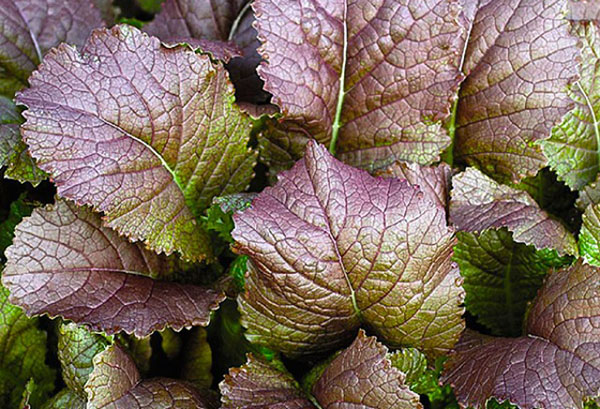
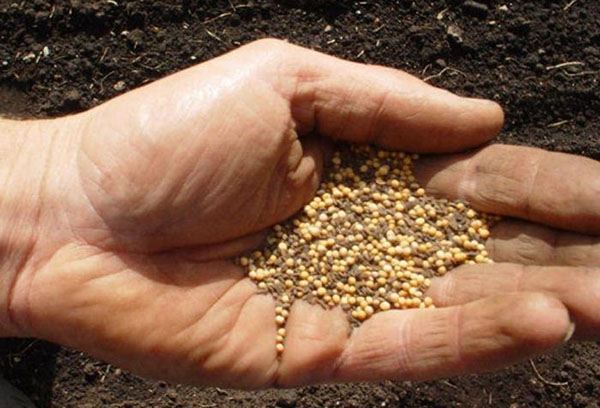
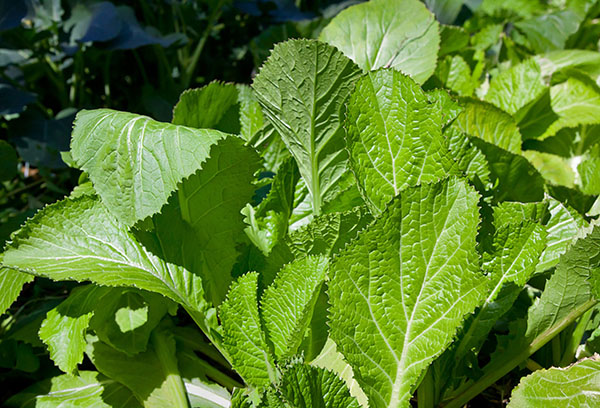
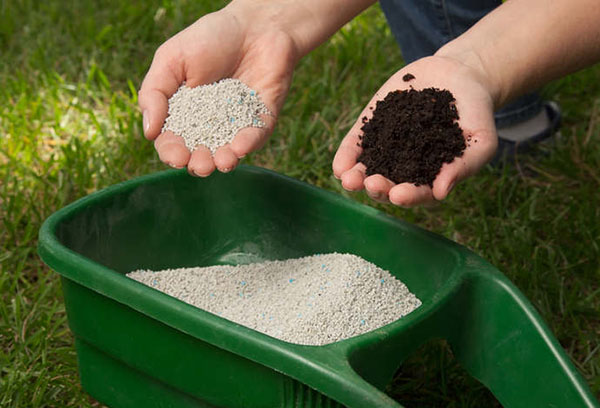
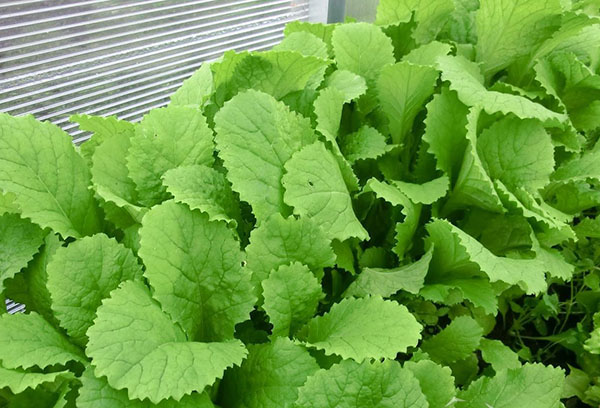
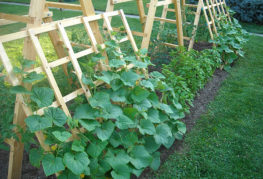

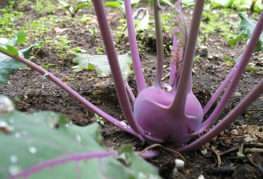
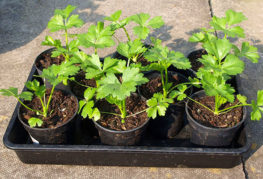
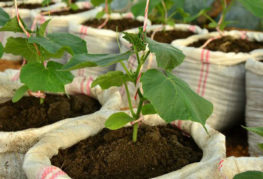
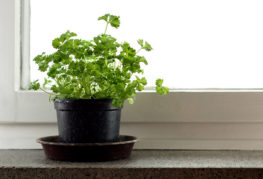
and will be published shortly.